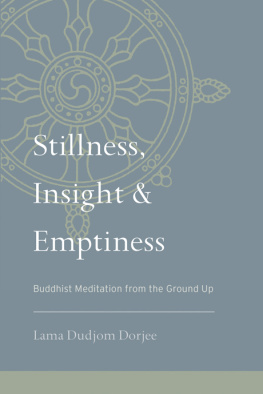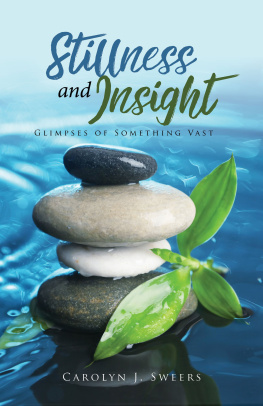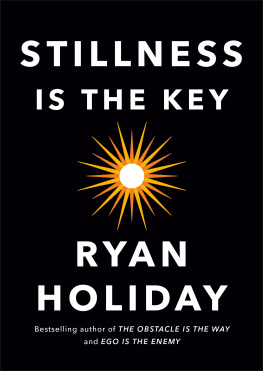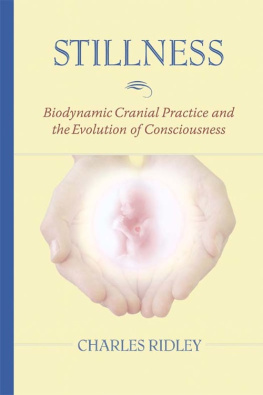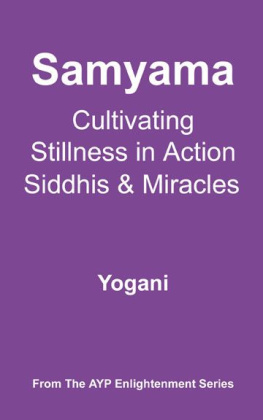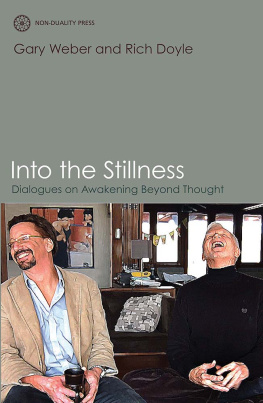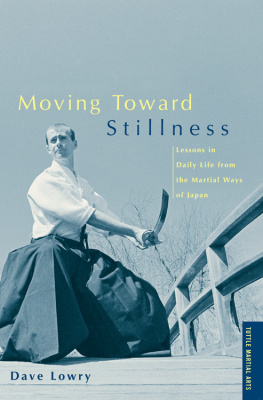The Black Crow
by Lee Red OakJohnson
Copyright 2012 Lee RedOak Johnson
Smashwords Edition
Smashwords Edition,License Notes
This ebook is licensedfor your personal enjoyment only. This ebook may not be re-sold orgiven away to other people. If you would like to share this bookwith another person, please purchase an additional copy for eachrecipient. If youre reading this book and did not purchase it, orit was not purchased for your use only, then please return toSmashwords.com and purchase your own copy. Thank you for respectingthe hard work of this author.
Table ofContents
Introduction
The Black Crow isan alchemical representation or symbol of the first stage of soulalchemy, Negredo, which is the stage of Awakening the Sleeping Man.Before Awakening can occur, Stillness must be sought, this beingStillness of the Mind and Body.
This course bookis focused on Stillness, but also goes into many of the rituals andpractices that are to be performed during this stage. Practicessuch as Sigil Magick and Desire Inhalation are to prepare you forthe Act of Magick, and are well worth performing to better yourlife and circumstances. The Sacred Space formation is alsosomething that will required in later stages of your personalevolution and practice as a Witch or Magician, and so to find theritual niche that best suits you is a very important aspect at thisearly stage.
This book iscomplimentary to The Reality of Things, as the previous book wasdesigned to give the beginner on the Paths a solid grounding intheir knowledge and understanding of Magick and Witchcraft ingeneral. Here, we continue that Journey on with more theory, butadd more practice and practical approach to your daily routine isgiven, so that you may perfect yourself.
Go well on yourSoul Quest and Journey with the Intent of the Pheonix.
Lee Red OakJohnson
Johannesburg,South Africa
Spring Equinox2010
Stillness
This first stagein your training has to do with stillness. In a sense this is abroad Not-Doing in that it is opposite to what we are used to. Wego about our day in constant movement, doing things, thinkingthings, feeling things, and so we need to learn how to becomestill.
One of the methodsto achieve this stillness is through the practice of Asana, whichis basically the practice of sitting with comfort and ease. Nowthis may seem simple, but sit in the same position for half an hourwithout moving a single muscle, and you will soon learn howdifficult it can become, no matter how comfortable you may thinkyou are when you begin.
Another aspect ofstillness, and especially with the practice of Asana, is to removethe mind from the body and all exterior influences. What this meansis that you bring total focus to your mind and the intent orthoughts that you are focusing on, and so whatever happens to yourbody or around you disappears and becomes irrelevant.
What is necessaryfor this course is that you practice stillness. Whenever you sitdown for an exercise in meditation or further exercises, unless ofcourse the exercise requires movement of the body, you will sit inAsana and be completely still. This means that you will not move asingle muscle, you will not move your tongue, your fingers, yourhead or any part of your body. There are those, and you will seethis if you ever read Liber 4 by Aliester Crowley, who suggest thatyou must practice until you become perfectly still, to the pointwhere you can sit for an hour and balance a saucer full of water onyour head without spilling a drop. Now being someone who hasinvoluntary muscle twitches, I find this to be a bit overboard. So,if you do have involuntary movements, i.e. those movements that youhave no control over, that is alright, but any movements that takeplace which you do have control over is a no-no. One thing I havefound necessary is swallowing. No matter how hard I try to notswallow, I have to. If I do not, then I would probably have salivarunning down my chin by the end of the practice which is not verygood for your robes if you are wearing any. So, do swallow, butonly when absolutely necessary.
Now the positionsyou can sit in are quite vast as far as Asana positions go. Crowleytalks about four positions in Liber 4, but I would suggest using aparticular one, and that is the God position. You can read theothers in Liber 4 if you like, but I think you will see that theyare somewhat difficult for the beginner.
So to get into theGod position, find yourself a chair that is firm with an uprightback. Sit in the chair with your back up straight and move yourhead, on your neck, slightly back and tilt your chin down veryslightly. If you were to exaggerate this movement you would betucking your chin into your chest. This will keep your neckcomfortable. Then put your feet firmly on the floor, legs together(I find this difficult so legs slightly apart will do. If they aretogether you may find that the muscles will not allow it after afew minutes and you will spend all your time trying to keep themtogether, not a necessity), and your palms on your thighs. Yourcalves should be perpendicular to the floor, your thighs parallelto the floor.
That is theposition. Now dont fool yourself by thinking that is so easy. Trysitting like that for half an hour without moving. You are going togo through pain, I am not going to lie to you. That pain however,after some practice, will start to disappear. It is usually some orother blockages in your energy system that are clearing out.However, the pain can also result from non-movement of the muscles.You may get cramps, you will get itches that you need to scratch,but dont move. Just let them pass and they will pass. When you aredone with a meditation, dont move immediately, first start to moveyour fingers, and then slowly start to move your body. First getthe aches and pains worked out before you stand up.
One-PointedMeditation
Meditation andbreath are two of the most important aspects of all magical paths.The problem is that we tend to consider them to be annoyingaspects. We have a problem meditating and so we allow the practiceto slip until we dont practice at all.
Meditation isnecessary for many things. First of all it is used for focus andconcentration. One-pointed meditation is the aspect of causing themind to focus on one thing to the exclusion of all others and isusually the method taught in Buddhism. Now, one big fallacy inmeditation is the idea that we need to banish all thought from ourminds. Quite frankly, this is impossible, even the Tibetan monkswho have been meditating for hours every day and for most of theirlife cannot cause the mind to become blank. I recall hearing thatthe monks were actually tested in this regard, and the most theycould accomplish was five minutes of complete blank mindedness.
When we considerthe 72 theory we find that the mind is never blank for any splitmoment of our life. This theory states that during periods of deeprest the mind has five thoughts going through it, and duringperiods of heightened activity, a maximum of nine thoughts. As wehave thoughts crowding the compartments of our mind we focus onthem, analyse them and when a thought starts to become lessimportant than another, it is pushed out of the compartments of themind and a new, more important thought takes its place. Of coursewhat this means is that the mind always has at least five thoughtscrowding it at any given moment. Taking that into consideration,how can we make the mind blank of thought? Well, we cant, andthere really is no need to create this condition. During meditationwe are not required to completely remove all thought, but rather tonot analyse those thoughts. We allow the thoughts to be present,but unlike in a normal waking state whereby we take each thoughtand analyse it, moving it aside to allow analysis of the next oneas it becomes more important, we merely allow those thoughts topass by without giving them any importance. One of the ways toaccomplish this is one-pointed meditation, to focus the mind on onething allowing all of the other thoughts to continue on by.
Next page







